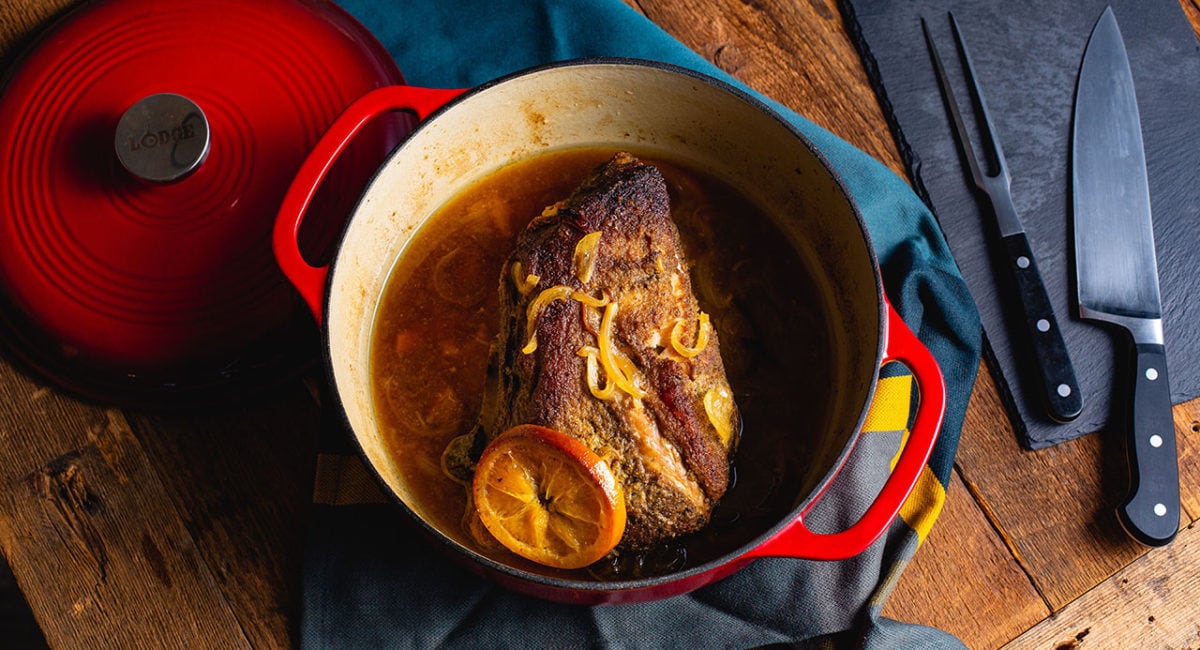ButcherBox Guide to Roasting
News flash: There are lots of ways to cook meat. But one of the most reliable techniques is roasting. Simply defined, roasting relies on hot air and a dry environment (no added liquid, keep meats uncovered) when cooking in the oven.
Roasting smaller cuts of meat is a friendly weeknight cooking method because it frees your hands and your stovetop to prepare other parts of the meal (or do something else altogether) while the meat cooks. And if you already have the oven cranked, it’s easy enough to throw another pan of vegetables into roast alongside the meat – or to prepare a sheet pan dinner that roasts ingredients all together in one pan.
Roasting larger cuts is more of a weekend or holiday project, because the bigger the meat, the longer it takes to cook. But even though roasting a big hunk of meat takes time, it’s all hands-off in the oven and can either feed a crowd or set you up with plenty of leftovers.
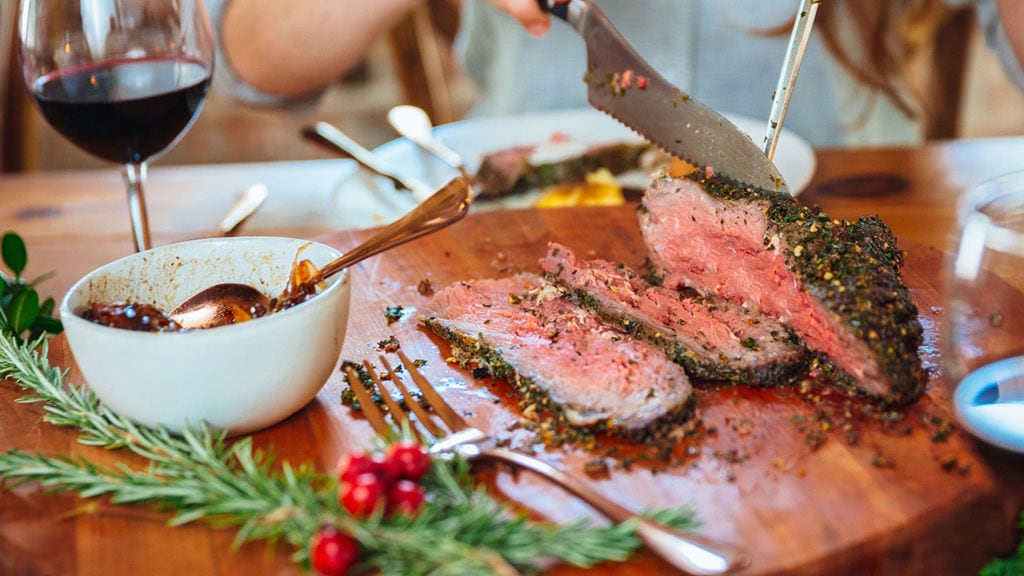 We’ll guide you through some of the questions you might have about roasting and the different ways to roast cuts of meat. Some of the topics include:
We’ll guide you through some of the questions you might have about roasting and the different ways to roast cuts of meat. Some of the topics include:
- A quick overview of the technique of roasting, what it means, and what it entails.
- The difference between roasting and roasts
- The best cuts of meat for roasting
- Recipes and ideas for great roasted meats.
What Is Roasting?
Roasting refers to cooking something in the oven (usually at a pretty high temperature for at least part of the time) uncovered, without added liquid. Unlike searing meat in a skillet or on the grill, during roasting, the food is not in direct contact with the heat source. Between the high temperature and the airflow around the food, roasting facilitates browning and even cooking. When you think roasting, think hot air.
What’s the Difference Between Roasting and Baking?
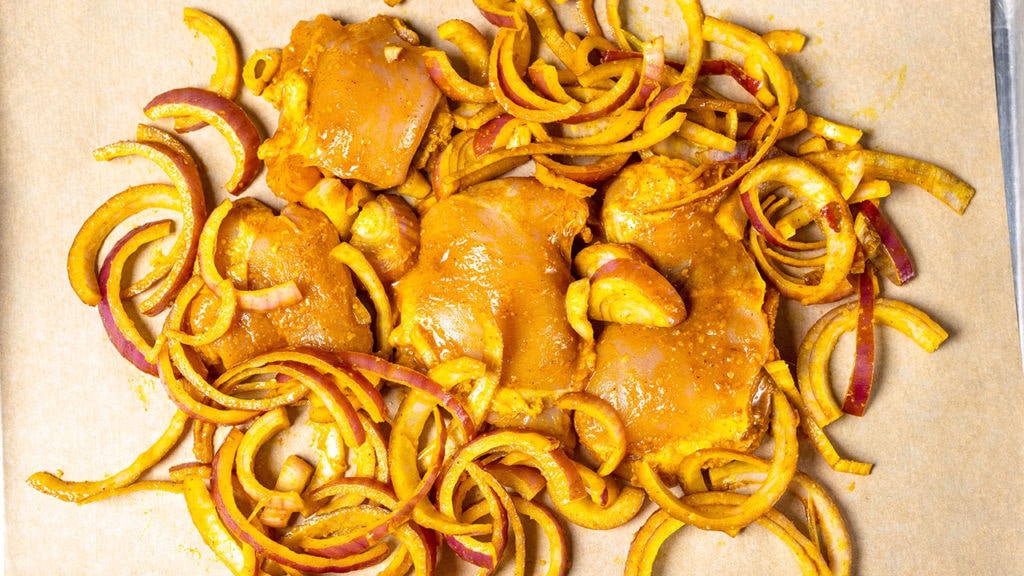 Baking and roasting both happen in the oven, but baking takes place at a lower temperature (usually 350°F to 375°F). Baked items are sometimes covered to keep the dish from drying out – think lasagna or other casseroles.
Baking and roasting both happen in the oven, but baking takes place at a lower temperature (usually 350°F to 375°F). Baked items are sometimes covered to keep the dish from drying out – think lasagna or other casseroles.
Hot Air Is the Name of the Game
High and dry heat accomplishes a couple of important things. The high temperature means the meat will cook relatively quickly if it’s a smaller cut; a high temp will brown meat nicely on the exterior. For larger cuts of meat, high temp at the beginning or end of cooking will encourage browning. If your cut of meat is skin-on, the hot air flowing through the oven will crisp the skin.
Depending on which cut of meat you’re cooking and what you want the outcome to be, roasting is a dependable method. Roasting a larger piece of meat, like a tri-tip or a sirloin roast, will feed a crowd or set you up for spin-off meals throughout the week. Roasting smaller cuts, like steaks, chicken pieces, or pork chops, gets the job done quickly for simple, fast weeknight cooking.
Roasts vs. Roasting: Let’s Break It Down
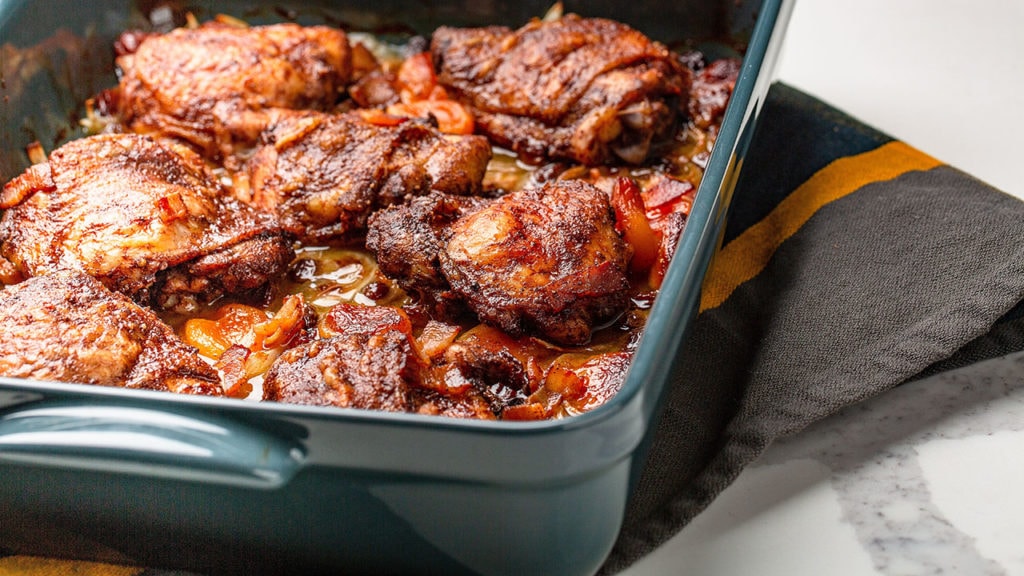 Meat nomenclature can be confusing, for real. Why do we call certain cuts roasts when we often braise those cuts? Why do we roast cuts that aren’t called roasts?
Meat nomenclature can be confusing, for real. Why do we call certain cuts roasts when we often braise those cuts? Why do we roast cuts that aren’t called roasts?
The cuts of meat that are called roasts have something in common: their size. Think about it: Stovetop cooking doesn’t work for big hunks of meat, so many of these are called roasts because that’s the traditional way they’ve been cooked. Here’s a primer we put together to guide you through some of the different roast cuts.
Here’s something to remember though: larger cuts of meat (aka “a roast”) also need a longer time to cook all the way through, so they may need to cook at a lower temperature than you’d use for roasting a medium piece of meat (like a whole chicken) or a smaller one (like a steak or a chop). Large roasts might cook at a high temperature at first to encourage browning, and then spend the rest of the cooking time at a lower temperature. Conversely, you can start cooking a larger roast at a lower temperature and then crank the heat at the end to get the browning going.
Of course, just because larger cuts are often called roasts, that doesn’t mean smaller pieces of meat can’t be roasted. You’ll typically have more success roasting pieces of meat that have plenty of fat to melt into and baste the meat; that are bone-in, giving the meat some internal temperature control as it cooks; and if applicable, that are skin-on, to protect the meat and also to turn deliciously crisp under the heat.
The Best Cuts of Meat for Roasting
Most cuts of meat do well when oven-roasted, you just need to keep an eye on the timing and the meat’s internal temperature. Any fat on the meat will melt off during cooking, helping to baste and add flavor to the piece of meat. Skin-on, bone-in cuts also perform well when roasted because the skin and bone help to protect the meat and keep it from drying out.
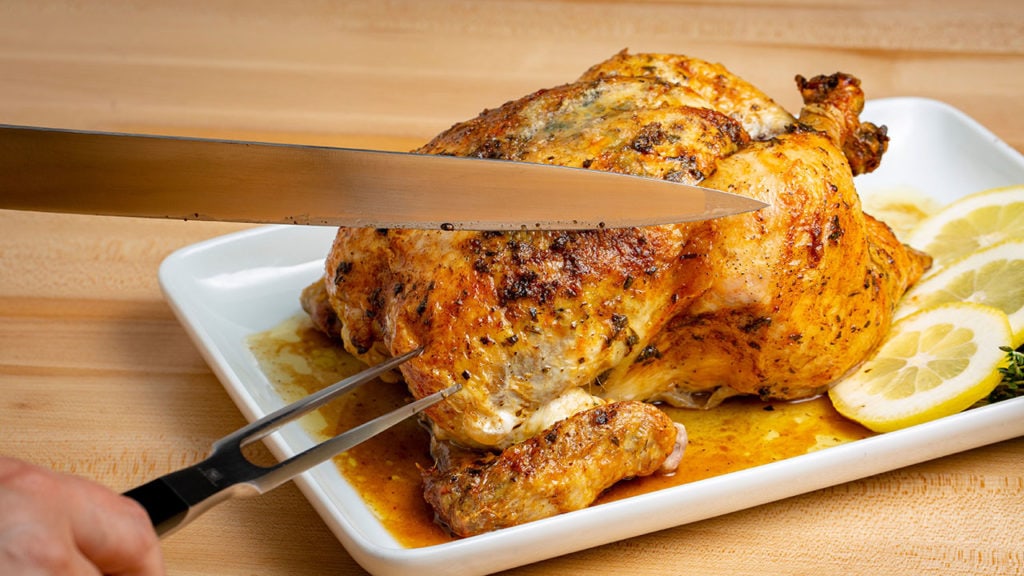 Here’s a list of our favorite cuts for dry-heat roasting:
Here’s a list of our favorite cuts for dry-heat roasting:
Chicken:
- Whole chicken: iconic, simple, and delicious. Follow our basic recipe or branch out to more adventurous flavor profiles, like this one with lemon and paprika.
- Bone-in, skin-on chicken thighs: Weeknight warriors that are quick-cooking and very tasty. The bone helps the meat cook evenly and the skin gets crisp while protecting the meat from drying out. Our basic recipe shows you how, but you can also try:
- Bone-in, skin-on chicken breasts: Skin and bones make this cut a better candidate for roasting than your average boneless skinless chicken breast. Our basic recipe has you rub a little olive oil under the skin to add some richness to this leaner cut.
Pork:
- Pork chops: Another weeknight kitchen MVP. Who doesn’t like a pork chop? Our basic recipe takes you through the steps for perfect roasted pork chops, but you can also try these recipes:
- Pork loin: A great cut to feed a crowd – and even better for sandwiches. This basic recipe will guide you along the process. Once you’re ready to branch out, try brining it in a flavorful liquid, like in this recipe for maple-brined pork loin.
- Pork shoulder: Another crowd-pleaser, we have a lot of love for this cut of pork, which gives the best leftovers ever and can take on any number of flavor profiles with aplomb. Our basic recipe calls for just salt, cumin, and smoked paprika, but that’s just the beginning. Check out this recipe for coffee-rubbed pork butt.
Beef:
We love beef roasts of all kinds, from brisket to crown roast. Our basic recipe for roast beef would work with tri-tip, eye round, or top round. Here are some other delicious ways to prepare a big hunk of beef.
Tips for Roasting Meat to Perfection
Whatever cut of meat you decide to roast, there are some general rules that will help ensure delicious, juicy, perfectly cooked meat, every time you decide it’s time for a roast.
Take these steps to roasted perfection:
- Bring the oven to temp: Make sure the oven is ready when you are. For an added boost of heat, preheat your pan for 10 minutes before adding the meat and placing in the oven.
- Season and temper your meat: Bring the cut out of the fridge about 30 minutes before cooking and season it as your recipe calls for. Pre-salting, while not necessary, gives the salt time to penetrate the meat tissue and spread flavor throughout. Taking the chill off your cut means it will take that piece of meat less time to reach the desired temperature and will cook more evenly in general.
- Take your roast’s temperature: A reliable meat thermometer is ground zero for cooking meat successfully. The instant-read variety is our favorite because they give a quick and accurate reading of the meat’s internal temperature – important for both deliciousness and food safety reasons.
- Let it rest: A well-rested piece of meat is a better-tasting piece of meat. Resting for roughly 5-10 minutes per pound gives the juices time to redistribute throughout the meat tissue and complete what’s known as the “carry-over cooking,” which happens when you take a dish out of the oven.
So, now that you have a sense of what’s possible with the technique of roasting, get ready to crank the oven and turn out some delicious dishes.
Guide to Roasting Meat
Table of Contents
Our Top Roasting Tips
All About Pot Roasts
- Guide to Pot Roast
- The Traditional Yankee Pot Roast
- How to Cook a Pot Roast
- The Best Cut of Meat for Pot Roast
How to Roast Anything
- How to Roast Chicken Thighs
- How to Roast Bone-In Chicken Thighs
- How to Roast Chicken Breasts
- How to Roast a Whole Chicken
- How to Roast Pork Chops
- How to Roast a Pork Loin
- How to Roast a Pork Butt

